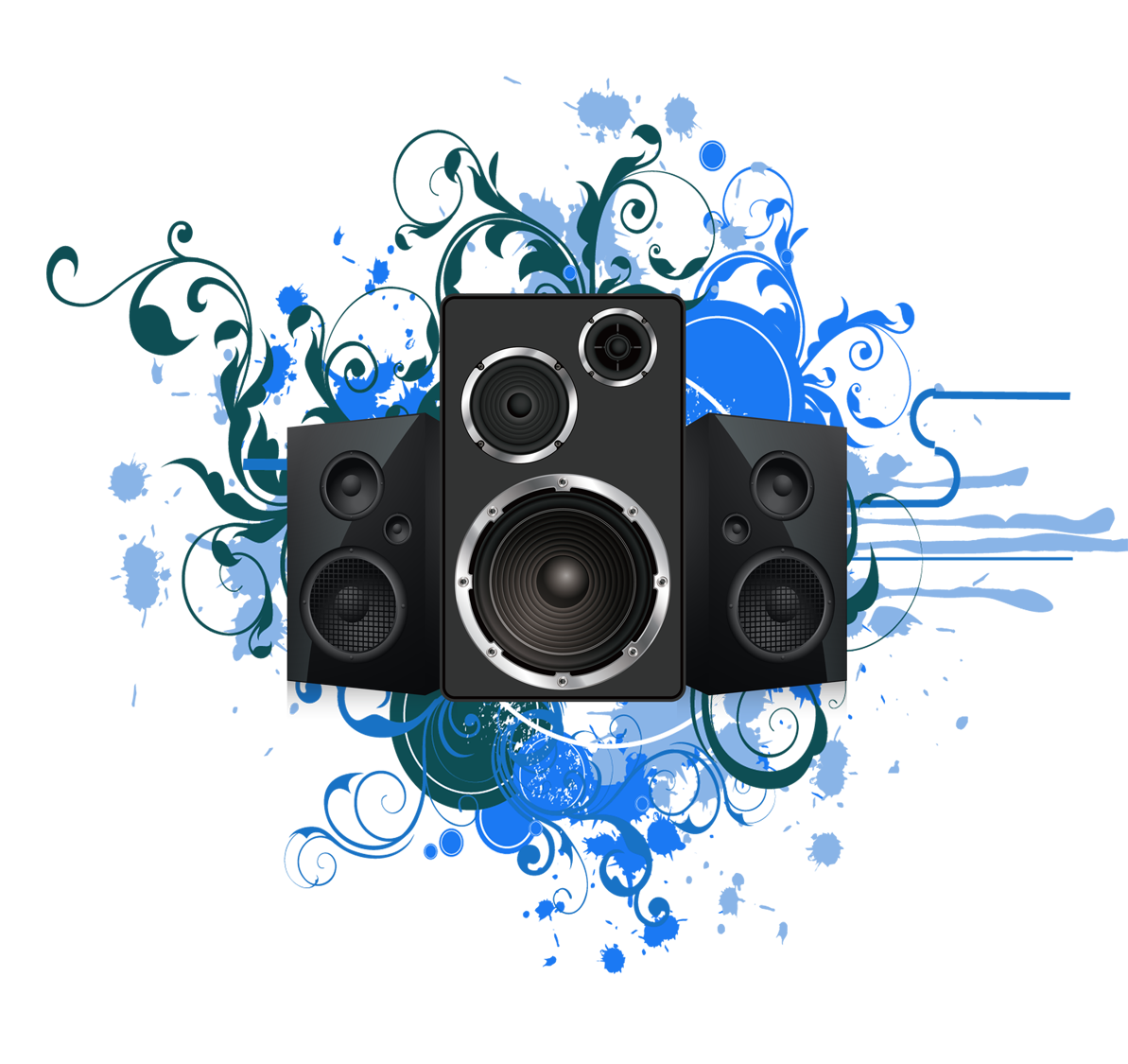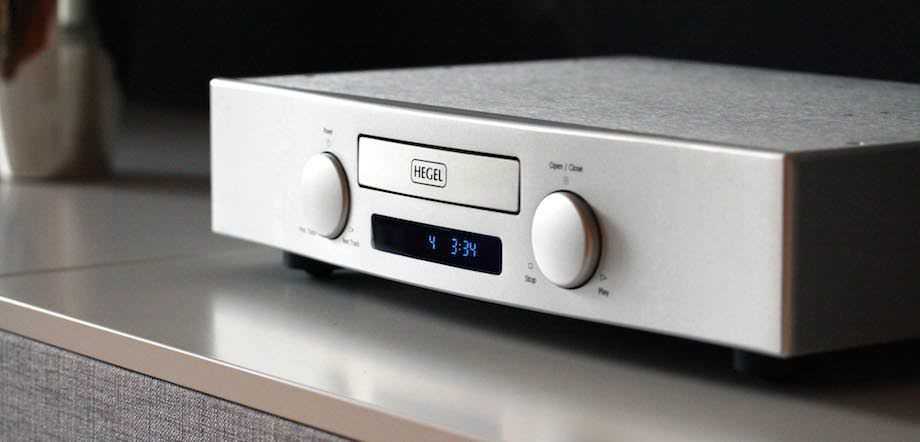Sound
(Image credit: Yamaha)
Beginning with the A-S3200’s line stages, we are impressed from the start. This is a surprisingly clean and clear performer that renders the leading edges of notes with crispness without ever veering towards sounding hard or edgy. That’s a difficult balancing act that quite a few alternatives fall foul of.
We’re pleased with the articulate way this Yamaha delivers Beethoven’s Moonlight Sonata, a beautiful piece that comes through with a great deal of subtlety and finesse. The A-S3200’s sound is expressive and nicely textured, and the music flows with elegance, the amp able to reveal slight changes of pace well.
We switch to Radiohead’s In Rainbows set and are pleased to find that the Yamaha has no trouble digging up lots of detail and organising it into a musically cohesive whole. Tracks such as 15 Step can easily sound messy and cluttered, but not through this Yamaha. It’s a responsive performer – one that’s happy to charge along at full throttle when the music demands. We’re particularly taken by the A-S3200’s bass performance, which is taut, tuneful and textured. The lows are seamlessly blended into the midrange, too, thanks to the shared agility and insight.
Tonally, this amplifier stands on the lean side of neutral, particularly through the midrange. This affects the A-S3200’s ability to convey solidity and punch through these frequencies and gives it a more analytical presentation than most. The class leaders produce a more ‘blood and guts’ presentation with this album, leaving the Yamaha to sound a little reserved in comparison.
We’re pleased to find that the A-S3200’s phono stage is a good one. It sounds best through the moving magnet option, delivering much of the clarity and detail we hear through the line stages. The phono stage sounds lively and has us playing record after record thanks to the combination of finesse, control and detail. It’s a relatively quiet circuit, even when we’re using the moving coil option. Here, we’re more aware of a loss of dynamic punch and verve, so if you have a high-quality moving coil-equipped record player, consider going for an outboard alternative such as the Vertere Acoustics Phono-1.
We have no such issues with the 6.3mm headphone output. Yamaha has provided a number of gain settings to allow for the variation of sensitivity between different models of headphones. We use the Beyerdynamic T1 Mk3 along with the Focal Stellia, and both work well, echoing the clarity, low-end punch and overall finesse we hear through the speaker outputs. The company has done a good job here, particularly as some rivals treat the headphone output as a box-ticking exercise and don’t engineer it with care.
The Sound
Every night around 8 pm, I started a ritual where I would turn the A-S3200 on and give it 20 minutes to warm up. It never really gets hot. Even when driven hard for long stretches of time. I’ve run my hand over the top cover after long listening sessions and it was never an issue. I wouldn’t stick the amplifier inside a cabinet and do this, but it takes a lot to overheat this product.
I also never really used any of the tone controls. Not a fan and I didn’t find that it made a huge impact on the sound with any of the tracks that I experimented with.
In some respects, the A-S3200 didn’t feel very “audiophile” in the way it dealt with imaging or detail. If you’re looking for a hyper-detailed sounding amplifier – look elsewhere.
The A-S3200 did one thing exceptionally well; and it’s rather important in my opinion.
Really good high-end equipment finds a way to tie it all together. Not in a pretty bow, but in a way that makes you feel that you’re listening to a recording that you’ve heard 1000 times – for the very first time.
That happened a lot with some older and decidedly non-audiophile recordings from the new wave music that I loved in my teens.
Talking Heads, Talk Talk, New Order, and the Cure felt almost overwhelming at moments.
Listening to Speaking in Tongues, or Remain in Light was a new experience through the A-S3200. The midrange has a definite bump and the wall of sound had my jumping out of my chair to join David Byrne on stage. Robert Smith told me to get off the fucking stage more than once.
That’s what great sounding audio equipment should always do.
I hated turning this amplifier off around midnight. You just wanted to reach for another record, or pull up another recording on Roon and see what the Yamaha could do with it.
Advertisement. Scroll to continue reading.
If a component doesn’t make you feel what you’re listening to – you’re wasting your money.
Bravo to Yamaha for getting this so right with the A-S3200.
ЗВУЧАНИЕ
Усилитель дает фирменный «ямаховский» звук с роскошной динамикой, но по сравнению с аппаратами из прошлых линеек заметны улучшения в обращении с тонкими материями тембро-вой палитры. Структура тембров передается без грубости, ясно и чисто. Низкочастотный фундамент звука воспроизводится с глубиной и плотностью, с отменной атакой и амплитудой. На динамичных басовых всплесках особенно хорошо чувствуется незаурядный запас мощности усилителя. При этом НЧ «голоса» инструментов звучат фактурно, все переходные процессы обра-батываются четко и быстро. Протяженный верх воздушен и похорошему ярок, шлейфы тарелок и ажурные перкуссии высвечиваются во всех подробностях, но при этом не заслоняют свои блеском остальную партитуру. Середина на умеренной громкости подается вполне нейтрально, с повышением уровня звука в тембрах деревянных духовых можно заметить небольшую сухость, а в голосах струнных и джазовой «меди» проскальзывают резкие нотки, но это все мелкие недочеты.
Стереообраз A-S1000 чуть выдвинут вперед, но сдвинут как единое целое, задние слои сцены также приближены и хорошо просматриваются. Солирующие инструменты выглядят укруп-ненными, но это лишь увеличивает эффектность звука, а до гротескной гипермасштабности дело никогда не доходит. Если что и нарушает идеальность композиции, так это немного увеличенные размеры инструментов басовой группы, которые усилитель иногда выдвигает из задних эшелонов сцены на передний план.
Цена: 38 000 рублей.
В качестве источника сигнала использовался CD-проигрыватель Bow Technologies ZZ-8. Усилитель значительно понижает уровень сигнала источника в ВЧ, и незначительно — в басе. Спад АЧХ усилителя в басе начинается со 50-60 Гц (–0.3 дБ при 20 Гц), в ВЧ с -5 кГц (–0.6 дБ при 20 кГц). Коэффициент гармоник (THD) усилителя на частоте 1кГц не превышает 0.035%, (THD источника 0.008%). Усилитель практически не меняет уровни гармоник старше третьей, он даже немного сглаживает их во всем диапазоне частот. Все влияние усилителя на сигнал сводится к выделению третьей гармоники во всем диапазоне, так что она становится максимальной в THD, а также к некоторому повышению второй гармоники в ВЧ.
Yamaha A-S1200
Усилитель имеет встроенный фонокорректор, рассчитанный на подключение головок ММ и МС, регуляторы тембра по низким и высоким частотам, а также подсвечиваемые стрелочные индикаторы мощности, отдаваемой в нагрузку. Благодаря классическому хай-файному дизайну усилитель будет органично смотреться в любом интерьере.
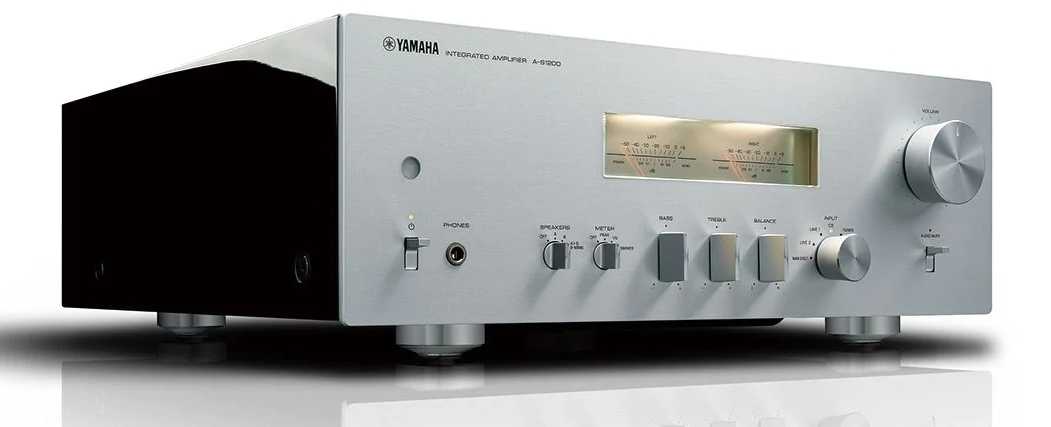
Yamaha A-S1200 Silver/piano black
Yamaha A-S1200 Black/piano black
В основу A-S1200, как и более старших стереофонических усилителей Yamaha, положена фирменная схемотехника «плавающего и балансного» усиления (Floating and Balanced Power Amplifier). Она отличается от традиционных симметричных схем наличием не связанных с «землёй» сигнальных и питающих цепей, благодаря чему снижается уровень помех и искажений. На выходе установлены MOSFET-транзисторы с одинаковой проводимостью, и ни один из акустических терминалов не соединен с землей, равно как и шины питания выходного каскада. Нет «средней» точки, соответственно в нагрузке отсутствует постоянная составляющая.
Эта схемотехника подкреплена у Yamaha концепцией малого импеданса (Low Impedance Concept). Реализуется она за счет увеличенного сечения проводов между выходами усилителя и винтовыми терминалами, а также между блоком питания и схемой и всех линий заземления. В модели A-S1200 для этого используется провод из чистой меди диаметром 2 мм.
Фирменная концепция Mechanical Ground предусматривает антивибрационную конструкцию шасси с массивными стальными опорами. В наибольшей степени это сказывается на лучшем воспроизведении низких частот. В блоке питания установлен мощный тороидальный трансформатор и конденсаторы фильтров большой ёмкости, за счёт чего обеспечиваются высокие динамические характеристики усилителя.
Усилитель предусматривает подключение проигрывателя винила и трёх линейных источников сигнала, а также двух пар акустических систем в каждом канале с коммутацией А/В переключателем на лицевой панели. Для подключения активного сабвуфера и иного расширения системы организованы два линейных выхода – регулируемый PRE OUT и прямой LINE OUT.
Режим стрелочных индикаторов можно задать VU или PEAK, а также отключить их совсем или приглушить подсветку. На лицевой панели имеется 6,3-миллиметровое гнездо для подключения наушников Выходная мощность A-S1200 составляет 2 х 90 Вт (8 Ом) и 2 х 150 Вт (4 Ома) при искажениях не более 0,07%. Фирменные акустические терминалы у A-S1200 не только привлекательны внешне, но и очень удобны для надёжной фиксации кабелей с любыми наконечниками.
Yamaha A-S2200
Усилитель имеет полностью балансную конструкцию, построенную по принципу «двойное моно». Встроенный фонокорректор рассчитан на работу с головками ММ и МС, имеются регуляторы тембра и баланса, а также подсвечиваемые стрелочные индикаторы. Благодаря классическому хай-файному дизайну усилитель будет органично смотреться в любом интерьере. Подключение по балансным входам гарантирует передачу тонких нюансов звучания при минимальном уровне помех.
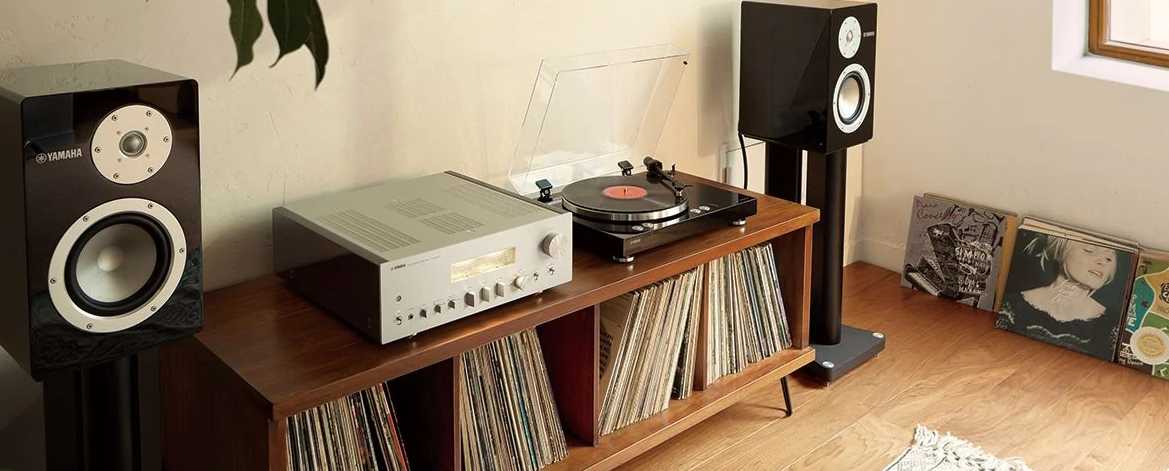
В основу A-S2200 положена фирменная схемотехника «плавающего и балансного» усиления (Floating and Balanced Power Amplifier). В выходных каскадах установлены MOSFET-транзисторы одинаковой проводимости, и ни один из акустических терминалов не соединен с «землёй», равно как и шины питания выходного каскада. Нет и средней точки, соответственно в нагрузке отсутствует постоянная составляющая.
В модели A-S2200 реализована и другая фирменная концепция – Low Impedance (низкий импеданс), которая позволяет уменьшить потери в сигнальных цепях и получить требуемый демпинг-фактор при меньшей глубине отрицательной обратной связи. По этому показателю A-S2200 не уступает флагманской модели A-S3200.
Топология модели – «двойное моно» при общем силовом трансформаторе, но с отдельными обмотками и четырьмя контурами питания для каждого канала. Усилительный тракт полностью симметричен от входа до выхода, а фирменная схемотехника Floating and Balanced Power Amplifier позволяет радикально снизить шумы и искажения вне зависимости от того, какой источник используется, с обычными или балансными выходами.
Фирменная концепция Mechanical Ground предусматривает антивибрационную конструкцию шасси с массивными латунными опорами. Наиболее заметно это сказывается на более чётком воспроизведении низких частот. В блоке питания установлен тороидальный трансформатор мощностью 625 ВА и конденсаторы фильтров большой ёмкости, за счёт чего достигаются высокие динамические характеристики усилителя.
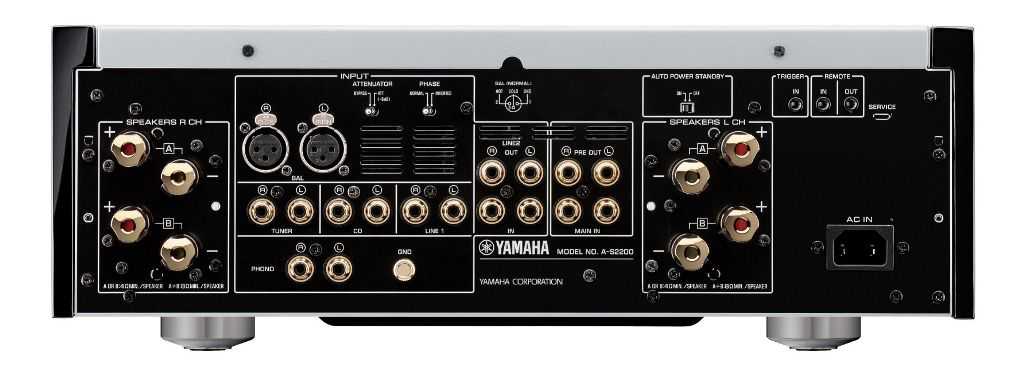 Все критически важные схемы усилителя, включая MM/MC фонокорректор, выполнены на дискретных элементах, операционные усилители используются только в регуляторах тембра и схемах стрелочных индикаторов. Звуковой тракт построен на премиальных комплектующих, в т.ч. полипропиленовых конденсаторах. В усилителе предусмотрен аудиофильский режим MAIN DIRECT, в котором сигнал от источника подаётся непосредственно на входы оконечных усилителей.
Все критически важные схемы усилителя, включая MM/MC фонокорректор, выполнены на дискретных элементах, операционные усилители используются только в регуляторах тембра и схемах стрелочных индикаторов. Звуковой тракт построен на премиальных комплектующих, в т.ч. полипропиленовых конденсаторах. В усилителе предусмотрен аудиофильский режим MAIN DIRECT, в котором сигнал от источника подаётся непосредственно на входы оконечных усилителей.
Усилитель предусматривает подключение проигрывателя винила и четырёх линейных источников сигнала, в том числе одного по балансному входу XLR. Две пары акустических систем А и В каждом канале коммутируются переключателем на лицевой панели. Для подключения активного сабвуфера и иного расширения системы организованы два линейных выхода – регулируемый PRE OUT и прямой LINE OUT.
В корпус встроен отдельный высококачественный усилитель для наушников, оптимальное согласование по импедансу задаётся переключателем на лицевой панели. Выходная мощность A-S2200 составляет 2 х 95 Вт (8 Ом) и 2 х 160 Вт (4 Ома) при искажениях не более 0,07%.
Yamaha A-S3200
Флагманская модель имеет полностью балансную конструкцию «двойное моно» с применением аудиофильских комплектующих. Встроенный фонокорректор рассчитан на работу с головками ММ и МС, имеются регуляторы тембра и баланса, а также крупные стрелочные индикаторы. Солидная конструкция и классический хай-файный дизайн возвращает в эпоху золотого века аудио. Подключение по балансным входам гарантирует передачу тонких нюансов звучания при минимальном уровне помех.
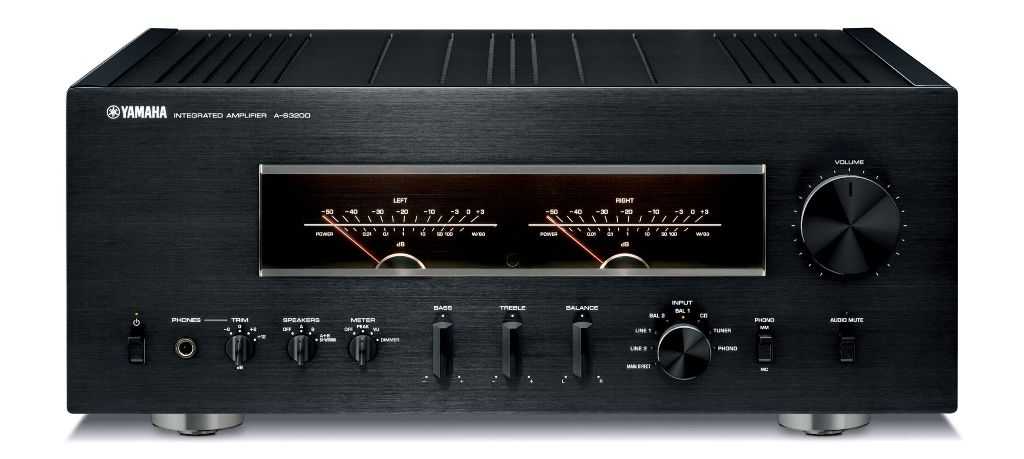
Yamaha A-S3200 Silver/Piano Black
Yamaha A-S3200 Black/Piano BlackВ основу A-S3200 также положена фирменная схемотехника Yamaha «плавающего и балансного» усиления (Floating and Balanced Power Amplifier). Входные каскады построены на мощных MOSFET-транзисторах одинаковой проводимости, и ни одна из акустических клемм не соединена с «землёй». Для A-S3200 была разработана фирменная концепция Low Impedance (низкий импеданс).
Топология модели, как и у предыдущих – «двойное моно» при общем силовом трансформаторе, но с отдельными обмотками и несколькими контурами питания для каждого канала. Усилительный тракт полностью симметричен от входа до выхода, а фирменная схемотехника позволяет радикально снизить шумы и искажения вне зависимости от того, какой источник используется, с обычными или балансными выходами. Фирменная концепция Mechanical Ground предусматривает антивибрационную конструкцию шасси с массивными латунными опорами и демпфирующими прокладками.
ОСОБЕННОСТИ
Yamaha издавна считалась лидером в производстве АС и компонентов для приложений ДК, но в последние годы японцы предприняли новое наступление на рынке hi-i . Сначала была выпущена серия АС Soavo, теперь компания разработала серию интегральных усилителей и универсальных проигрывателей.
Принципы конструкции, выходной каскад, блок питания и фоно-секцию «герой» обзора унаследовал от флагмана линейки новых усилителей Yamaha, модели A-S2000. Усилительные цепи построены по запатентованной технологии Floating Point Power Amplii er, в которой используются полностью балансная схема и блоки питания постоянного напряжения, отвязанные от общей «земли». Положительная и отрицательная части сигнала одного канала вместе с отводами питания и цепями отрицательной обратной связи изолированы друг от друга. Инженеры отказались от пуш-пульного принципа и применили в оконечном каскаде транзисторы одной полярности, что позволило еще больше симметризировать схему. В блоке питания стоят большой трансформатор с Ш-образным сердечником и четыре емкости по 18 тыс. мкФ каждая, в четырех отводах напряжение выравнивается 12-ю параллельными стабилизаторами. Картридж переключаемого фонокорректора (ММ/МС) и телефонный усилитель смонтированы отдельно от остальной схемы.
Даже узлы тембр-блока и баланса каналов сделаны в A-S1000 по-особому. Вместо последовательного включения микросхем и присутствия кнопки, укорачивающей сигнальный путь в обход контроллеров, японцы включили все контроллеры в цепь параллельно, уменьшив шумы.
На задней панели разместились 6 линейных входов, включая фонокорректорный с переключателем типа картриджа, выход с предусилителя и выход на записывающее устройство. Два набора крупных акустических клемм с позолотой оригинально расположены по диагонали.
Yamaha A-S1200
Усилитель имеет встроенный фонокорректор, рассчитанный на подключение головок ММ и МС, регуляторы тембра по низким и высоким частотам, а также подсвечиваемые стрелочные индикаторы мощности, отдаваемой в нагрузку. Благодаря классическому хай-файному дизайну усилитель будет органично смотреться в любом интерьере.

Yamaha A-S1200 Silver/piano black
Yamaha A-S1200 Black/piano black
В основу A-S1200, как и более старших стереофонических усилителей Yamaha, положена фирменная схемотехника «плавающего и балансного» усиления (Floating and Balanced Power Amplifier). Она отличается от традиционных симметричных схем наличием не связанных с «землёй» сигнальных и питающих цепей, благодаря чему снижается уровень помех и искажений. На выходе установлены MOSFET-транзисторы с одинаковой проводимостью, и ни один из акустических терминалов не соединен с землей, равно как и шины питания выходного каскада. Нет «средней» точки, соответственно в нагрузке отсутствует постоянная составляющая.
Эта схемотехника подкреплена у Yamaha концепцией малого импеданса (Low Impedance Concept). Реализуется она за счет увеличенного сечения проводов между выходами усилителя и винтовыми терминалами, а также между блоком питания и схемой и всех линий заземления. В модели A-S1200 для этого используется провод из чистой меди диаметром 2 мм.
Фирменная концепция Mechanical Ground предусматривает антивибрационную конструкцию шасси с массивными стальными опорами. В наибольшей степени это сказывается на лучшем воспроизведении низких частот. В блоке питания установлен мощный тороидальный трансформатор и конденсаторы фильтров большой ёмкости, за счёт чего обеспечиваются высокие динамические характеристики усилителя.
Усилитель предусматривает подключение проигрывателя винила и трёх линейных источников сигнала, а также двух пар акустических систем в каждом канале с коммутацией А/В переключателем на лицевой панели. Для подключения активного сабвуфера и иного расширения системы организованы два линейных выхода – регулируемый PRE OUT и прямой LINE OUT.
Режим стрелочных индикаторов можно задать VU или PEAK, а также отключить их совсем или приглушить подсветку. На лицевой панели имеется 6,3-миллиметровое гнездо для подключения наушников Выходная мощность A-S1200 составляет 2 х 90 Вт (8 Ом) и 2 х 150 Вт (4 Ома) при искажениях не более 0,07%. Фирменные акустические терминалы у A-S1200 не только привлекательны внешне, но и очень удобны для надёжной фиксации кабелей с любыми наконечниками.
Yamaha A-S3200
Флагманская модель имеет полностью балансную конструкцию «двойное моно» с применением аудиофильских комплектующих. Встроенный фонокорректор рассчитан на работу с головками ММ и МС, имеются регуляторы тембра и баланса, а также крупные стрелочные индикаторы. Солидная конструкция и классический хай-файный дизайн возвращает в эпоху золотого века аудио. Подключение по балансным входам гарантирует передачу тонких нюансов звучания при минимальном уровне помех.

Yamaha A-S3200 Silver/Piano Black
Yamaha A-S3200 Black/Piano BlackВ основу A-S3200 также положена фирменная схемотехника Yamaha «плавающего и балансного» усиления (Floating and Balanced Power Amplifier). Входные каскады построены на мощных MOSFET-транзисторах одинаковой проводимости, и ни одна из акустических клемм не соединена с «землёй». Для A-S3200 была разработана фирменная концепция Low Impedance (низкий импеданс).
Топология модели, как и у предыдущих – «двойное моно» при общем силовом трансформаторе, но с отдельными обмотками и несколькими контурами питания для каждого канала. Усилительный тракт полностью симметричен от входа до выхода, а фирменная схемотехника позволяет радикально снизить шумы и искажения вне зависимости от того, какой источник используется, с обычными или балансными выходами. Фирменная концепция Mechanical Ground предусматривает антивибрационную конструкцию шасси с массивными латунными опорами и демпфирующими прокладками.
